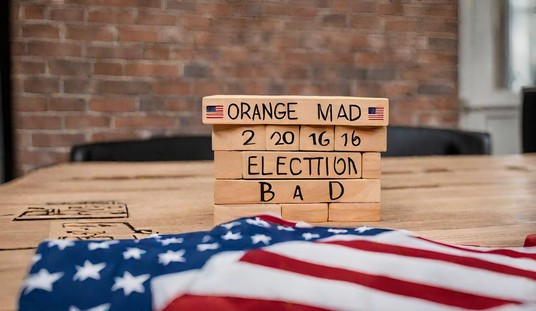A full recitation of the differences between Barack Obama and Donald Trump would fill a book.
Since this is a blog, not a book, I won’t assay that gargantuan task. But I wanted to say a word about two of the things that have repeatedly struck me about the differences between the two men.
I am going to leave to one side what might be the largest difference: that Obama was above all a man of lofty-sounding rhetoric, at once pragmatic in tone and utopian in aspiration, while Trump is a man of demotic and sometimes involuted rhetoric but decisive, almost impatient action.
An example on everyone’s mind is Syria. Obama had his red line, rendered inert (Whew!) by the as-it-turns-out-false assurance that “100 percent” of Syrias’s chemical weapons had been removed. Trump saw footage of the results of Assad’s early April sarin gas attack and responded a couple of days later with with 59 Tomahawk cruise missiles against the air base from which the attack originated.
Red line and inaction vs. infraction and response.
Many more examples of that sort could be adduced, but I wanted to call attention to two things that are more modest.
One concerns the character of their more personal interventions. Again, I am going to leave one large category out of consideration: everything that has to do with race. Instead, I would simply ask you to think about some of Obama’s signal actions with respect to race: his support of Eric Holder, the most patently racialist attorney general in history, his intervention while president into local controversies like the Skip-Gates-Cambridge-Policeman episode or the “If-I-Had-A-Son-He–Would-Look-Like-Trayvon-Martin” wheeze. Such things, I believe, tell us a lot about Obama’s unspoken Weltanschauung: the value-laden background of assumptions out of which his immaculately accoutered pronouncements were uttered.
There is not, so far as I have been able to determine, anything similar in Donald Trump’s makeup. His approach to problems, to events generally, is less ideological than pragmatic. “What’s the right thing to do in this particular case?” That seems to be his cynosure. You might not like the answers he gives, but it is easy to see that they come not from a previously adopted program or ideology but from an ad hoc response to the case at hand. Critics call that “confusion” or “inconsistency” or “contradiction.” I’m not sure those categories have much purchase in this context.
In any event, this difference between Obama and Trump results in some striking contrasts between the two men. In 2014, Obama made headlines when he traded five senior Taliban leaders held captive in Guantanamo Bay for the release of Bowe Robert Bergdahl, the Army solider who deserted his post while on guard duty in June 2009 after announcing his loathing for America and hatred of the Army. “I am ashamed to be an American,” he wrote in an email to his parents. “And the title of US soldier is just the lie of fools. . . . The horror that is America is disgusting.” Who can forget the spectacle of Bergdahl’s parents, who came to the White House and praised Allah for the release of their son?
Donald Trump, through diplomatic intervention with Egyptian President al-Sisi when he visited Washington earlier this month, quietly secured the release of the Egyptian-American charity worker Aya Hijazi, her Egyptian husband, and four other humanitarian workers who had been held for three years by Egyptian authorities. Trump sent a government plane to pick up the entoruage and welcome Hijazi to the White House for a photo-op.
Mark the difference.
Obama ordered the liberation of terrorists to secure the release of an anti-American Army deserter whose desertion cost the lives of at least six Army soldiers who had been sent to look for him. Trump hears about the plight of a U.S. national, uses a behind-the-scenes diplomatic initiative as an occasion to secure her release, and celebrates it at the White House.
You probably remember the case of Bowe Bergdahl. It was plastered all over the media when it happened. Susan Rice (yes, Susan Rice) told the world that Bergdahl had served “with honor and distinction.” That was before the news of his desertion became widely known. When that was established the mainstream media suddenly went quiet.
But what have you heard about Aya Hijazi? If you get your news form The New York Times, the answer is, not much. As Ann Althouse pointed out a couple of days ago, news of her release appeared not on the front page but rather on page 10 of the print edition of our former paper of record. It appears in a little box not under the rubric “World” or “U.S.” but under “Politics,” sandwiched, as Althouse points out, between “Right and Left: Partisan Writing You Shouldn’t Miss” and “Jeff Sessions Dismisses Hawaii as ‘an Island in the Pacific.’”
The moral is that, for The New York Times, Donald Trump is unable to perform a humanitarian act. Everything he does must be filtered through the lens of left-wing political animus.
Which brings me to the second contrast between Obama and Trump. Every candid observer know that the press swooned—and continues to swoon—over Barack Obama. Chris Matthew’s frisson-up-the-leg may stand as the objective correlative of the phenomenon. “He speaks about America in way that has nothing to do with politics,” Matthews said with a straight face, “it has to do with the way we feel about our country. And that is an objective assessment.”
Done snorting yet?
If so, consider next the way that the media treats Donald Trump. A few days ago, a poll was released that showed that 89 percent of press coverage of Trump was negative. Again, no candid observer needs a poll to grasp that. But what the case of the Times and Aya Hijazi shows is that the issue is not just hostile press. It is also the higher hostility of contempt. Yes, other liberal outlets, including, as Althouse points out, The Washington Post featured the Hijazi story. But there is at work a machinery of ontological depreciation. It almost doesn’t matter what Trump does. The operative policy of the MSM is to meet his actions with hostility where possible, contemptuous negligence where hostility is not advisable.
As we approach Trump’s hundredth day in office, however, I am happy to say that I sense a change in the anti-Trump dynamic. The anti-Trump venom is as widespread and hysterical as ever. But as the days go by and Trump governs not as Hitler but as a deliberate executive, toting up victories here, setbacks there, rain checks and extenuations and opportunities, more and more people will say, “This guy is the real deal. He gets things done. He delivers on his promises. He really is making America great again.” The effect of that sentiment will be to marginalize the mainstream media. If you want a vivid example of exactly how that is done, contemplate what’s about to happen next Saturday when Trump skips the White House Correspondents’ Dinner and holds a big rally in Pennsylvania instead. I’m sure there will be lots of snide remarks, anti-Trump jokes, and the air will be thick with contemptuous self-satisfaction. What might not be obvious to the attendees, but what will be blindingly obvious to the rest of us, is that no one who is not crowded into that fetid atmosphere will care. A process of marginalization and emasculation is underway. If Trump’s second 100 days is as successful as his first 100 days, that process should be essentially complete by the end of the year.









Join the conversation as a VIP Member